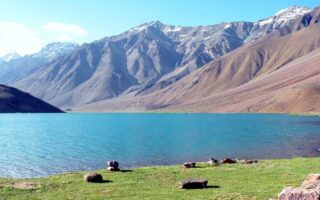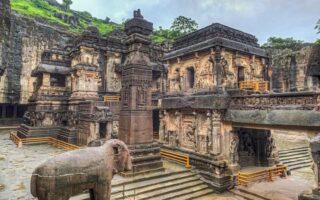After every night, comes a new day. After every storm, there is light. And just maybe that’s why the Dussehra comes right after the stormy monsoon season – the celebration of Durga’s victory over Mahishasura, Ram’s over Ravan, good over evil.
As a child, I used to love Dussehra simply because father would buy toy bows and arrows for us kids, and then fashion a Ravan out of newspaper, cotton, paint and scrap. We would then proceed to aim our bows at the poor fellow, Ravan I mean, not dad, and release our brahmastra, vayu astra, agni astra, plastic arrow astra and basically destroy the living daylights out of him. Over the years, we grew up and Dussehra stopped being as important.
But a few years back, I was a spectator to Ahmedabad’s Navratri and this year, I happened to be dragged into Delhi’s very own ‘Little Kolkata’ – CR Park, where the Durga Pujo is inarguably the festival everyone is waiting year round for. In these two places, we saw colour, we saw larger than life idols; we saw conches and we saw dandiyas; we saw vermillion and we saw chaniya cholis, we saw drunk men, and happier women; we saw enterprise – hundreds of stalls selling street food, water, soft drinks, ‘chineeze’ dishes, costumes and what not. Most of all, we saw a carnival, an opportunity for different communities to come out of their homes for a week every afternoon, every night and celebrate life.
If you’d like to be part of this week long carnival, these are some of the best places in India to enjoy in the revelry.
1) Kolkata, West Bengal
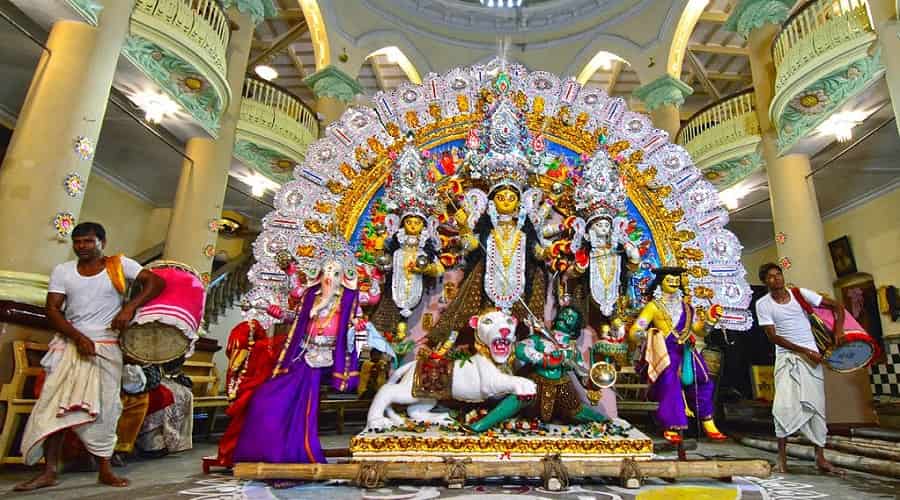
In Kolkata , Durga Puja is more than just a festival. This ten day celebration begins with Mahalaya (day one) and ends on Bijoya Dashami. Everywhere you walk in this city, under the autumn sky, Pujo is omnipresent. Pandals are scattered all over the city, each with their own theme, and Pandal Hopping is the done thing. The good pandals exist in clusters, so if it’s the famous Ahiritola Sarbojanin puja you want to attend, (five minutes from the Shovabazar metro station), you can couple it up with the Kumartuli Sarbojanin and Chaltabagan Lohapatty pujas, only a short walk away. A prettier way to see the proceedings is to go via ferry on the Hooghly river.
In the middle of it all, in the blur of it all, with people praying to a giant colourful golden idol, conches blowing, drummers sweating, dancers swaying in perfect sync, someone spilling a spicy puchka, people laughing, the flirting, the grand white sarees with red borders, the extravagant makeup, the noise and the smoke, in the sindur khela and married women spraying vermillion on each other, there is a vibe about Kolkata in these moments which is difficult to capture anywhere else.
2) Bastar, Chhattisgarh
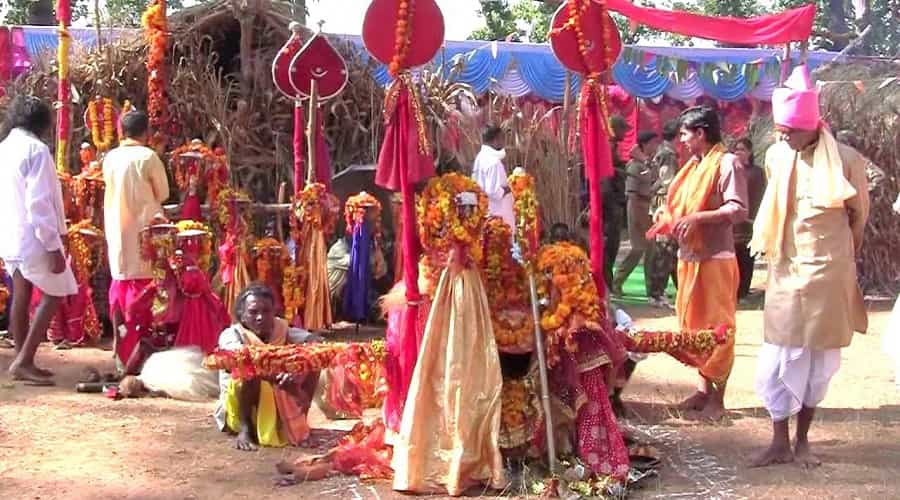
In Bastar, Chhattisgarh, tribal villagers celebrate Dussehra not for nine days, but a whopping 75 days! Here, instead of rejoicing over Ravana’s death, they celebrate Dussehra as a congregation of Devi Maoli (revered as the “elder sister” of Devi Danteshwari), and all her sisters. Hundreds of priests bring flower-bedecked local deities to the Danteshwari temple in Jagdalpur, with all pomp and show. The main attraction of this festival is the Rath Yatra. A double decker chariot (Rath) weighing over 30 tonnes is made by villagers, and only traditional tools are used to make this chariot. Last year it took 170 villagers almost two weeks to make the chariot. The State Tourism Department light a thousand lamps to illuminate the path of the Rath and both town people as well as tourists follow the Rath as it goes around Jagdalpur. It is believed that good luck will follow all those who help in dragging the chariot.
3) Ahmedabad, Gujarat
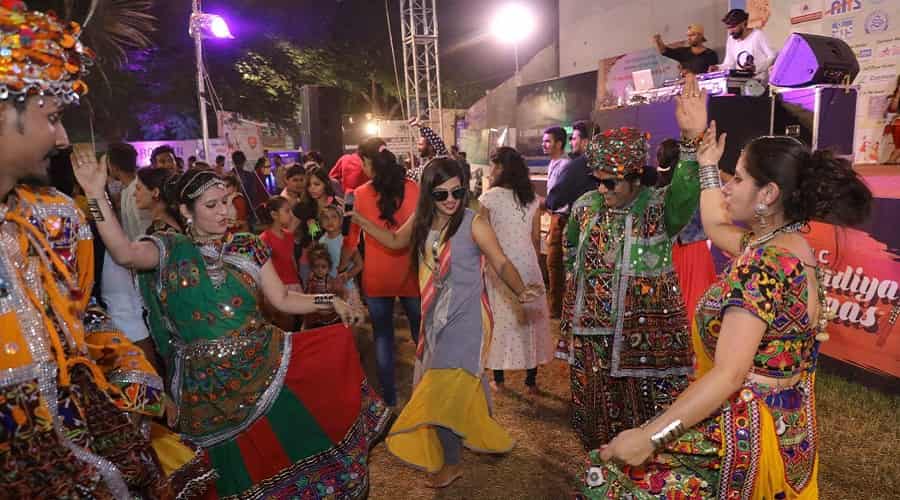
Ahmedabad is never as alive as it is during Navratri. The city is decked to the core, throughout the nine days, and all that everyone does is wait for the evening for the Garba and Dandiya Rasa, when they can take their dandiyas and go dance, the girls in their sequined or backless chaniya cholis, the men in their traditional kedias. In Gujarat, people worship goddess Amba during this festival. According to superstition, women will be blessed with a child if they have darshan of the goddess on Ashtami. NRI’s have their own Garba Ras events in community clubs in USA and UK every year, but there aint anything like the original version in Gujarat.
Behind the pomp, the show, the glitz and the noise, there are thousands of men and women sitting in dark rooms and small factories creating the extravaganza, bit by bit, piece by piece.
At the end of it all, lying scattered on the earth are paper plates, streamers, burnt crackers, remnants of what was once a Ravan, and all that will be swept away the next day. The party will end, and life will continue. But for those nine ten days, in some parts of India, the streets are full of people dressed in their best, making a lot more noise than usual, happily letting go of regular life. And maybe that is the way for a traveler to enjoy the puja most in these towns and cities, by letting go and allowing the maddening crowd, the sights, the superstitions to overwhelm your senses.
Also Read: Popular Fair and Festivals of Gujarat
4) Chittaranjan Park, New Delhi
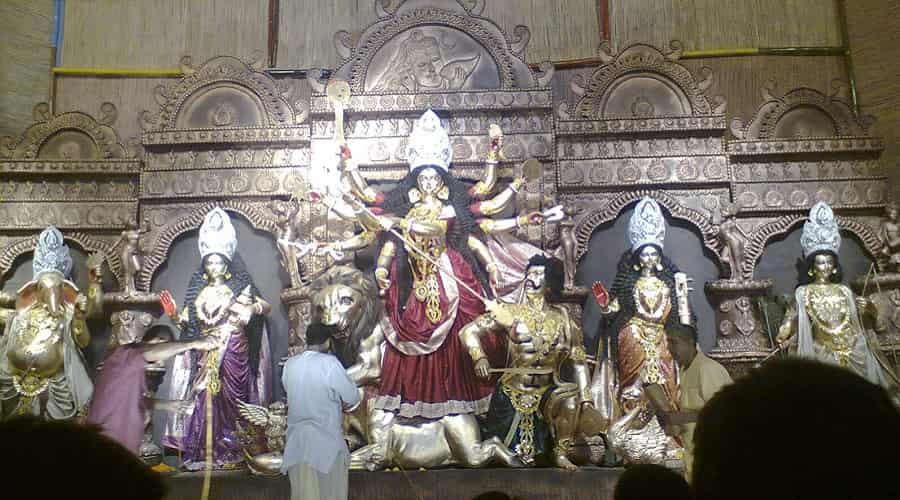
Sitting here for the past 4-5 days of the Puja, weaving my bike through hordes of men hell bent on walking in the middle of the road, losing all hearing thanks to the local version of the vuvuzela, and biting into chicken roll after roll, fish Orley after fish Orley, I have become used to a routine that I will miss once these festivities are over. I still don’t understand why my Bong friends insist we visit every possible Pandal, most still look the same to me, but I tag along and click some more, eat some more, learn some more. Come down to our side of town next year, yo! Till then, Shubho Bijoya!
5) Varanasi
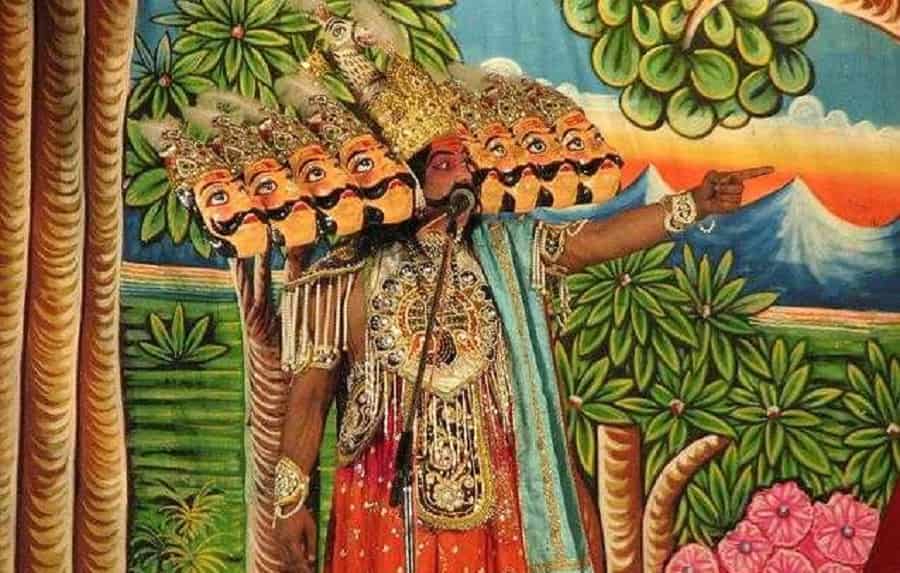
Ramlila celebrations at Varanasi were initiated by Maharaja of Kashi. The festivities continue here for 31 days and are marked with impressive performances by the artist. A distinguishing feature of the festival at Ramnagar (located at a short distance from Varanasi) is that permanent structures that are used in different episodes of the play have been erected at various places. Both the players and the viewers have to keep on shifting to different locales.
You May also Like Read: Famous Fair and Festivals of Varanasi
6) Mysore
As other regions celebrate the existence of Mother Goddess, the city of palaces too is geared up to honour Goddess Chamundeshwari through Dasara. Nowadays, Mysore is at its dazzling best with Dasara celebrations in full swing. The royal state festival of Karnataka has made Mysore beam vibrance and illuminate to the festivities.
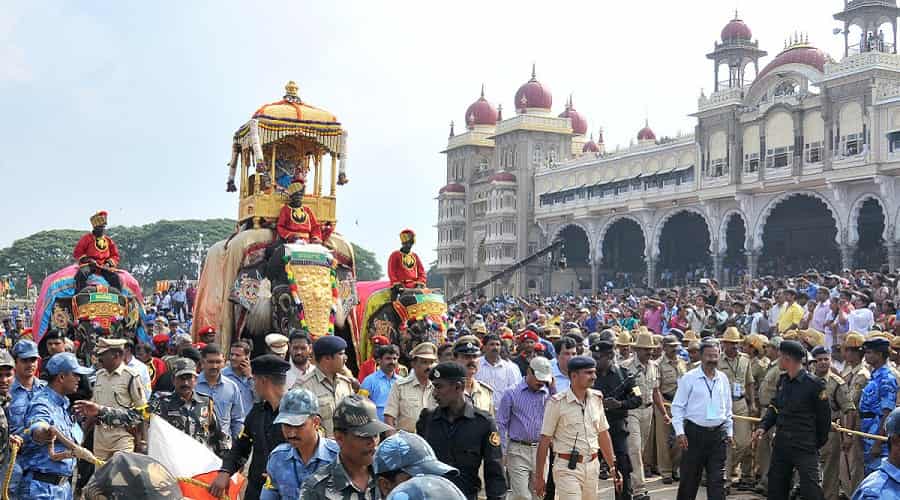
According to legends, Mysore or Mahishur was the kingdom of Mahishasura, the buffalo headed demon. Here only the Goddess Chamundeshwari killed him on the tenth day of war. And since then, Dasara is celebrated as a symbol of victory of good over evil.
Though the whole city is illuminated during Dasara, it’s the Mysore Palace which remains the center of attention. Over 97,000 bulbs adorn this grand palace.
On the ninth day, Ayudha Puja is performed with the worship of implements used in daily life such as computers, books or kitchen tools. It symbolizes the divine in the tools and objects that ease life.
The procession or Jumboo Savari on the tenth day marks the finale of this festival. This state procession begins from Mysore Palace and concludes at Bannimantap Parade Ground, where the Banni tree – Prosopis spicigera (symbolizing victory) is worshipped.
The garlanded idol of the Goddess Chamundeshwari placed on a 500 kg golden howdah atop the decorated elephant is the highlight of Jumboo Savari. This idol is worshipped by the royal couple before it is taken around in the procession. Colourful tableaux, dance groups, music bands, armed forces, folk performers, dancers, decorated elephants, horses, camels and brass bands comprise this gala end.
In the evening, a Torchlight Parade at Bannimantap along with fireworks closes this victory festival. All this and much more, dazzle the sandalwood city – Mysore during Dasara.
